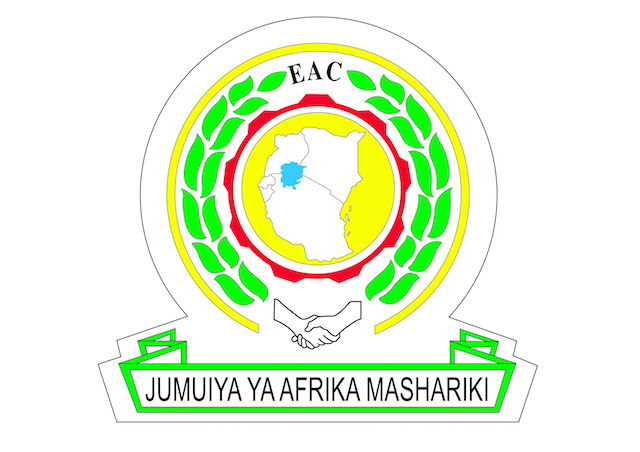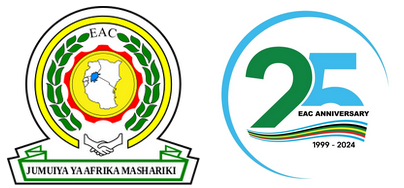
EAC Secretariat to Celebrate the International Day for Disaster Reduction (IDDR)
East African Community Headquarters, Arusha. 13th October, 2017:
The East African Community will join the rest of the world in celebrating the 2017 International Day for Disaster Reduction (IDDR) on 13th October, 2017. The event will take place at the EAC Headquarters in Arusha, Tanzania.
The overall objective of the IDDR celebration is to create awareness and promote a culture of disaster reduction, including disaster prevention, mitigation and preparedness in the EAC region, and promote best practices at regional level and across all sectors to reduce disaster with a particular focus on reducing the numbers of people at risk and disaster losses.
The UN General Assembly has designated 13th October as IDDR. Since it began 25 years ago, the day has grown into a major global awareness event celebrated in many ways to recognize progress and encourage efforts to build more disaster-resilient communities and nations.
The IDDR is an opportunity to acknowledge the substantial progress being made towards reduction of disaster risk and losses in lives, livelihoods and health and in the economic, physical, social, cultural and environmental assets of persons, businesses, communities and countries. Such an outcome is the aim of the Sendai Framework for Disaster Risk Reduction, a global instrument adopted at the Third UN World Conference on Disaster Risk Reduction in Japan in March 2015.
The 2017 IDDR is the Second year of “The Sendai Seven” Campaign and the focus on the day will be Target (b) of the Sendai Framework for Disaster Risk Reduction whose focus is on reducing the numbers of people affected by disasters by reducing exposure and displacement. The theme of the day is “HOME SAFE HOME…A home saved is a family saved from displacement, poverty, injury and ill health.” This implies protection against injury, against ill health and loss of livelihood by minimizing disasters risks.
“Home Safe Home” slogan for IDDR in 2017 was adopted following a year in which 24.2 million of new displacements by disasters were recorded by the Internal Displacement Monitoring Centre (IDMC). A key focus of the campaign is on the issue of disaster-related displacement and what can be done to protect people in the home and workplace from disasters, and to make these locations more resilient to disasters. This is a key challenge in many hazard-exposed parts of the world but notably in low and middle-income countries
The EAC Celebration is expected to come up with an increased awareness of the Sendai Framework and a key target; a greater focus on risk-informed investment in housing stock and slum upgrading; protective measures and the importance of reducing injury and ill-health as consequences of disaster events; a greater focus on protecting livelihoods and places of work in hazard-prone areas; and an increased awareness on the role everyone/ every sector can play in reducing disaster risk.
The celebration will include an EAC Statement on the occasion of the IDD, to be published, a seminar and other activities involving community participation and cooperation. EAC internal stakeholders namely Productive and Social Sectors, Infrastructure, Peace and Security, Security, Human resources and Administration, and Corporate communication will technically contribute to the success of the event.
NOTES TO EDITORS
EAC region is vulnerable to disasters
The EAC sub-region like any other region in the world is suffering from Disasters that are caused by natural and manmade hazards. The East Africa region is prone to natural hazards such floods, droughts, earthquakes, landslides, strong winds, lightening and their secondary impacts of diseases and epidemics making the region the most vulnerable and least resilient to disasters. This is attributable to climate change impacts, Geographic situation (Western Rift, volcanoes, earthquake, hilly...), Poverty: including lack of knowledge, technology to adapt, or to be prepared to Disasters, environmental degradation, growing human populations, over and unsustainable exploitation of environmental resources and poor land use planning among other factors.
The region is equally predisposed to manmade disasters such as urban fires, environmental degradation, water pollution, HIV and Aids and outbreaks of disease epidemics. Pest infestation, Conflicts, fires, livestock diseases, Terrorism Environmental degradation (desertification, pollution, soil erosion, etc.), lightning, wind-storms, hailstorms, are also common hazards of the region. Drought and Floods are the most frequent disasters in the region. Drought and its associated famine has become a major setback to economic development due to its direct impacts on the lives and livelihoods and caused homeless, sometimes called Climate Refugees. Floods and conflicts are the most current causes of displacement. Those hazards have for a long time reversed economic gains whereby resources meant for development programmes have to be diverted to fight drought emergencies
EAC achievements in Disaster Risk Reduction
The EAC has made positive moves in integrating DRR into policies and programmes. In addressing Disasters Partner States have established DRR comprehensive Policy frameworks, enacted several legislations and formed DRR Platforms that guide interventions in DRR. The fourth EAC Development Strategy (2011-2016) also emphasizes on the implementation of the Hyogo Framework for Action and the Africa Strategy for Disaster Risk Reduction. The EAC Climate Change Policy emphasize on DRR as a tool for climate change adaptation. A Climate Change Strategy and a Climate Change Master Plan are being implemented. The EAC region developed DRR institutions and instruments including the EAC DRR Strategy. The EAC DRRM Act that was recently passed b EALA has provisions of other institutions that include the DRRM Board, the DRRM Authority and the DRRM Fund.
The Sendai Framework for Disaster Risk reduction
The Sendai Framework was adopted by the United Nations (UN) Member States at the 3rd UN World Conference for Disaster Risk Reduction (WCDRR) in March 2015 in Sendai, Japan and endorsed by the UN General Assembly. The aim of the Sendai Framework is to achieve „The substantial reduction of disaster risk and losses in lives, livelihoods and health and in the economic, physical, social, cultural and environmental assets of persons, businesses, communities and countries‟ by 2030 through progress monitored with indicators against seven global targets.
These targets aim to reduce: (a) mortality, (b) the number of affected people, (c) economic losses, and (d) critical infrastructure damage; and increase; (e) the number of national and local disaster risk reduction (DRR) strategies, (f) level of international cooperation, and (g) availability of and access to multi-hazard early warning systems and disaster risk information and assessments. To attain those targets, the Sendai Framework has defined 4 priorities: 1)Understanding Disaster Risk, 2) Strengthening Disaster Risk governance to manage disaster Risk, 3) investing in Disaster Risk reduction, and 4) enhancing disaster preparedness for effective response, and to build back better in recovery, rehabilitation and reconstruction.
The Sendai Seven Campaign
The year 2016 saw the launch by the UN Secretary-General of “The Sendai Seven Campaign” to promote each of the seven targets over seven years. This year’s target is focused on prevention, protection and reducing the number of people affected by disasters, Target (b). It concerns the safety of all but particularly those at greater risk of death, injury, ill-health, loss of livelihood, displacement and lack of access to basic services from disaster events including women and children, people living with disabilities, and older persons. These groups have varying degrees of exposure to disaster events and also need to be included in disaster risk management planning.
The International Day’s rallying cry implies all this but focuses on the primal importance of the family home as a sanctuary and safe refuge in times of disaster with a particular focus on preventing displacement. The Campaign will also encompass the other key indicators for Target The Sendai Seven Campaign is an opportunity for governments, local governments, UN agencies and all stakeholders including the private sector, science and technology partners, community groups, civil society organisations, international organisations, to promote and advertise best practice at international, regional and national level across all sectors, to reduce disaster risk and disaster losses.
October 13th: International Day for Disaster Reduction
The United Nations General Assembly has designated 13 October as International Day for Disaster Reduction to promote a global culture of disaster reduction, including disaster prevention, mitigation and preparedness. Since it began 25 years ago, the day has grown into a major global awareness event celebrated in many ways to recognize progress and encourage efforts to build more disaster-resilient communities and nations.
- ENDS -
For more information, please contact:
Mr Owora Richard Othieno
Head, Corporate Communications and Public Affairs Department
EAC Secretariat
Arusha, Tanzania
Tel: +255 784 835021
Email: OOthieno [at] eachq.org
About the East African Community Secretariat:
The East African Community (EAC) is a regional intergovernmental organisation of five Partner States, comprising Burundi, Kenya, Rwanda, Tanzania and Uganda, with its headquarters in Arusha, Tanzania.
